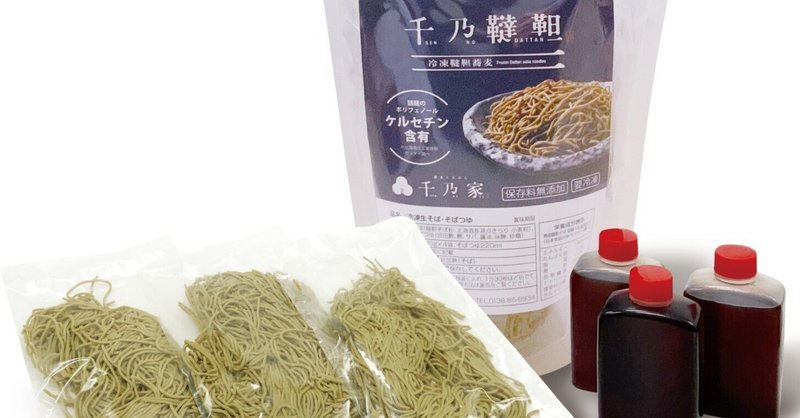
Developing Quercetin-rich Tartary Buckwheat Soba-noodles
I have been in Soba business over 35 years in the southern part of Hokkaido. I opened my first shop in 1996, and it moved and renewed as “Sen-no-ya” in the suburbs of Hakodate in 2019.
In 1999, I came across Tartary buckwheat grown in the town of Mori, near my soba shop. Tartary buckwheat originates from China, but its main production area in Japan is Hokkaido. It is richer in rutin than buckwheat, but it is difficult to make into noodles and has a bitter taste. The variety at the time was said to be 'good for you but not tasty'. Many restaurants tried it, but it soon disappeared. So, in order to satisfy both taste and functionality, we make noodles using Tartary buckwheat as much as possible, with wheat flour as binder, and offer them in our restaurants. The reason why we don't add ordinary buckwheat flour is because we want to preserve the active ingredients of Tartary buckwheat as much as possible.
One time, a customer from Tokyo wanted to take some Tartary buckwheat noodles home with him, but I couldn't sell them because fresh noodles only last one day. Then I started joint research with the Hokkaido Industrial Technology Centre in Hakodate to produce Tartary buckwheat noodles with a longer preservation.
Waking up at 5am to prepare for soba shop, going to the lab at 9am to look into the microscope and drive back in time for the 11am opening was not easy. However, I was able to stay motivated because I had one goal: to develop useful products. It took courage for me to consult with the research institute, but I am now proud of myself at the time, because my actions led to product development. In 2022, 20 years after my first encounter with Tartary buckwheat, frozen fresh noodles with maximum quercetin from Tartary buckwheat were completed.
Visit our website for details.
この記事が気に入ったらサポートをしてみませんか?
